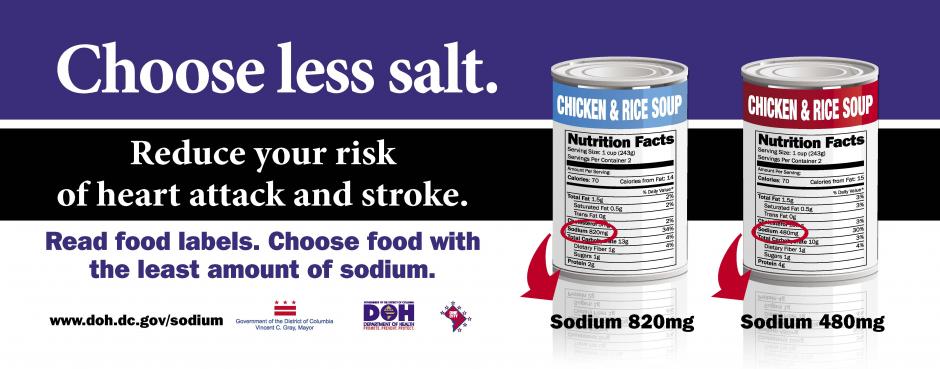
What is Sodium?
Sodium helps your body balance the level of fluid inside and outside your cells. Increased sodium in your body can cause your body to hold excess fluid. When this happens, your heart has to work harder to pump this added fluid. The force of blood pushing against the hearts arteries as the heart pumps blood is known as blood pressure. Reducing the amount of sodium you consume can help lower your blood pressure, and also manage your weight.
Sodium is also known by other names, such as:
· Salt
· Sodium Chloride
· Sodium Benzoate
· MSG
Why is it Important to Reduce Sodium Intake?
High amounts of sodium can raise your blood pressure. High blood pressure (also known as hypertension) is dangerous because it makes your heart work too hard and increases the risk for heart disease and stroke. High blood pressure can also cause other problems such as heart failure, kidney disease, and blindness.
It is recommended that adults consume less than 2,400 milligrams of sodium a day; this includes all meals and beverages. (2,400 milligrams equivalent to about 1teaspoon of table salt).
2,400 milligrams a day is possible! Ways to Reduce Sodium Intake
Sodium can be found in most processed foods. These foods usually account for most of the salt consumed.
Foods that are usually high in sodium include:
- Canned Soups
- Canned Meats
- Frozen Meals
- Processed Foods (deli meats, white bread, instant and flavored rice, pastas, and cereals).
To reduce your sodium intake
- Always check food labels to see how much sodium you are having in a meal
- Avoid canned items such as tuna, canned beans or canned chicken. If you do have them, rinse the canned foods to remove the sodium.
- Look for canned items that say “plain” or “with no salt added”
- Avoid instant or flavored rice, pasta, and cereals and use a minimal amount of seasonings high in salt when cooking these items.
- Cut back on frozen dinners, pizza, and packaged mixes.
- Cut back on fast foods, as these foods contain a high level of sodium
- Avoid adding additional salt to your meals; instead use different herbs and spices for flavoring.
- As you reduce your sodium intake your taste buds will gradually adjust, so stick with it!
Fact Sheets:
Sodium Reduction
High Blood Pressure


